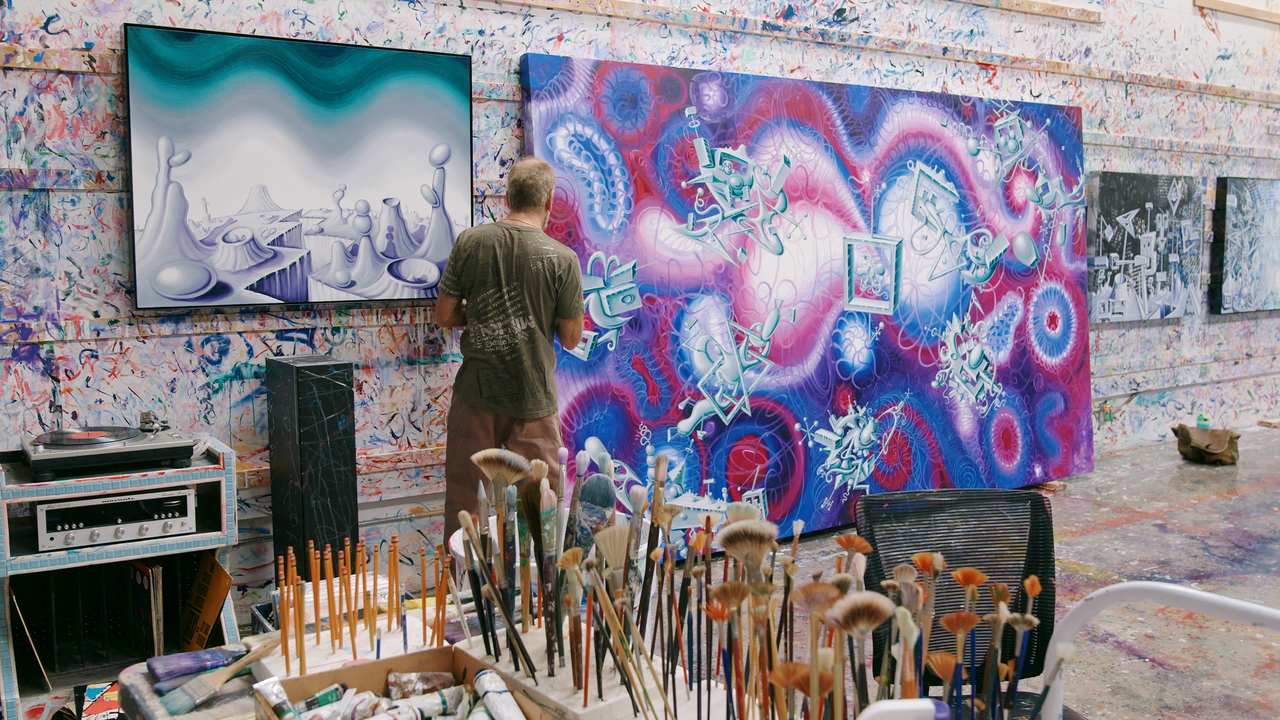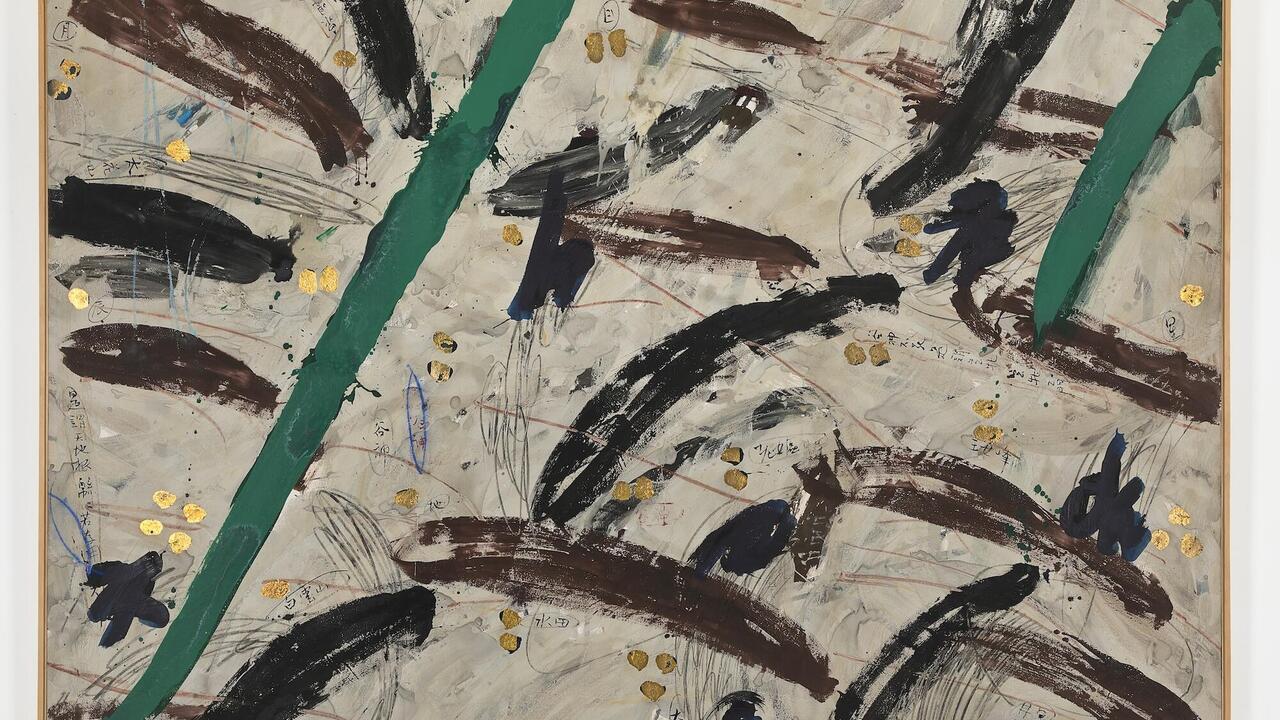Larry Bell & Sarah Crowner, Meet Marlow Moss

My maths teacher’s favourite T-shirt bore an image of Piet Mondrian’s Composition With Four Yellow Lines (1933). The right angles of the yellow square, rounded on his bulging stomach, accentuated the deepening ochre pools around his armpits. I’m not quite sure what it was that I was trying to revive from that period (the 1980s), but I recently bought a cardboard box of Kleenex tissues that mimicked Mondrian’s abstract paintings. Where the folded cardboard failed to make the lines meet, a new formal and mental space was created: there was room for uncertainty in this disturbed pattern – a breath of fresh air in the original Modernist grid.
It is this space that I recognize in the work of the American artist Sarah Crowner. Her paintings have a bold, mimicking quality to them, in which Modernist patterns and convictions are quoted, transformed and even shattered. Looking at her new work installed at Kunstverein in Amsterdam, redecorated for the occasion with electric blue carpeting, I was unsure if I was looking at a painting or at a reference. It was this tight space of uncertainty that gave weight to the work.
For this exhibition, Crowner chose to show her work in the context of another American artist, Larry Bell, along with an additional insert to the show called ‘Meet Marlow Moss’, which introduced the work and biography of the eccentric painter, marginalized figure and Mondrian disciple Marjorie Jewel Moss, who died in 1958. Each piece reflected on the next. Crowner selected works from a recent series by Bell, whose biography in the show’s press release reads like a sci-fi novel: ‘Larry Bell walked around Venice, California in the early sixties with a camera attached to his back, a bio-feedback chip in his hat and a trigger mechanism connected to his earlobes. Alpha waves emitted by a body in a state of wellbeing would set off the photo-taking process and eventually lead to a series of blurred pictures capturing perception on the move, observation in its most random form.’ Most striking was Bell’s SF 3.9.12 (2012) an image of a torn, curling mass whose origin could only be guessed at, but was reminiscent of the earliest daguerreotypes – wild experiments into the nature of light and how to capture its behaviour on paper. Similar works from this series stem from pure curiosity about natural phenomena, and seem agitated in their positioning against the Modernist tradition. In the company of Crowner’s paintings, Bell’s work is revealed to be explicitly non-painting – colours are created through light instead. If not for the paint or lack of it, however, it would have been hard to distinguish whose work belonged to whom, as both Crowner’s and Bell’s creations share a luminous quality in ideas and in surface treatment.
Crowner placed her Corner Painting for Larry (2013), a diptych suggestive of a huge empty room or cube (after Bell’s cube sculptures from the 1960s) on either side of a corner in the narrow space of Kunstverein. The work was also said to reference that of Moss. According to Lucy Howarth, quoted on the gallery's website: ‘Moss disrupts and subverts the narratives that could include her. This resistance to categorisation is a large factor in Moss’s obscurity; she is omitted from the histories, because she does not fit in. To date she is most consistently approached in reference to Mondrian, a context that casts her in the role of follower, or worse: imitator, a role that’s far beneath her.’ Even if these references could not be exactly traced, their mere suggestion attached a string to the histories of artists that come to life through Crowner’s work, however constructed their reality may seem.
Moss’s paintings, only one of which was included in the exhibition, are so like those of Mondrian that the originality of both becomes questionable. Of all the certainties that I have ever questioned, the artistic originality of Mondrian was not one of them. In this way, Crowner’s work and its staging beside Bell’s and Moss’s was an unabashed celebration of originality, tribute and mimicry.
















